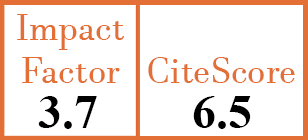Full Papers
Influence of rheumatoid factor on serum drug levels of tumour necrosis factor inhibitors with different structures in rheumatoid arthritis
A. Martínez-Feito1, C. Plasencia-Rodríguez2, M. Novella-Navarro3, J.E. Gehin4, B. Hernández-Breijo5, C.M. Brenis6, A. Villalba-Yllán7, E. Fernández8, I. Monjo-Henry9, D. Pascual-Salcedo10, P. Nozal11, A. Balsa12
- Immunology Unit, La Paz University Hospital, Madrid, and Immuno-Rheumatology Research Group, Institute for Health Research (IdiPAZ), Madrid, Spain.
- Immuno-Rheumatology Research Group, Institute for Health Research (IdiPAZ), Madrid, and Rheumatology Department, La Paz University Hospital, Madrid, Spain.
- Immuno-Rheumatology Research Group, Institute for Health Research (IdiPAZ), Madrid, and Rheumatology Department, La Paz University Hospital, Madrid, Spain.
- Department of Medical Biochemistry, Oslo University Hospital, Oslo, Norway.
- Immuno-Rheumatology Research Group, Institute for Health Research (IdiPAZ), Madrid, Spain.
- VIB-UGent Inflammation Research Center Gent, Belgium.
- Rheumatology Department, La Paz University Hospital, Madrid, Spain.
- Rheumatology Department, La Paz University Hospital, Madrid, Spain.
- Rheumatology Department, La Paz University Hospital, Madrid, Spain.
- Immuno-Rheumatology Research Group, Institute for Health Research (IdiPAZ), Madrid, Spain.
- Immunology Unit, La Paz University Hospital, Madrid, and Center for Biomedical Network Research on Rare Diseases (CIBERER U754), Madrid, Spain.
- Immuno-Rheumatology Research Group, Institute for Health Research (IdiPAZ), Madrid, and Rheumatology Department, La Paz University Hospital, Madrid, Spain. alejandro.balsa@salud.madrid.org
CER16875
Full Papers
PMID: 38197184 [PubMed]
Received: 30/05/2023
Accepted : 30/10/2023
In Press: 08/01/2024
Abstract
OBJECTIVES:
Certolizumab pegol (CZP), an Fc-free antibody fragment, has shown stable serum levels and steady efficacy in the treatment of RA patients, irrespective of RF levels at baseline. Here, we examine, in clinical practice, the effect of baseline RF and ACPA levels on serum drug levels of IFX, ADL and CZP an Fc-free antibody fragment.
METHODS:
This is a retrospective study performed in real-world patients. We assessed 170 patients with RA: 90 (53%) received IFX, 48 (28%) ADL and 32 (19%) CZP. Demographic and clinical variables, RF and ACPA levels were obtained at the baseline visit (T0), and patients were stratified based on negative, low, medium, or high levels. After 6 months (T6) serum drug levels and anti-drug antibodies (ADAb), were computed.
RESULTS:
While CZP serum levels did not differ across RF groups at T6, high baseline RF was linked to lower serum drug levels compared to RF negative status in treatment with complete monoclonal antibodies IFX and ADL. No differences in disease activity measured by DAS28 at baseline were observed across RF quartiles in patients treated with IFX or ADL. ADAb was observed in 26 patients with IFX, 3 with ADL and 1 with CZP, following 6 months of treatment. Patients with high baseline RF levels dropped out more frequently by secondary non-response in IFX or ADL than CZP (80% vs. 75% vs. 33%, p=0.002).
CONCLUSIONS:
In this real word data evaluation, CZP serum levels were independent of RF levels in patients however patients with high baseline RF levels who obtained IFX or ADL had lower serum drug levels at 6 months than baseline RF-negative patients. In addition, secondary non-response was more frequent in patients with high RF levels treated with IFX and ADL.



